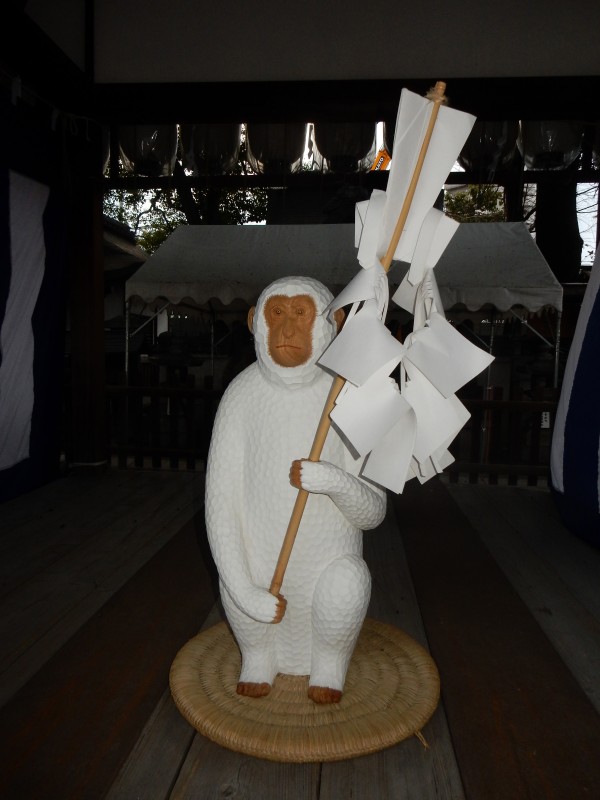 The small shrine of Sarutahiko Jinja is not very well known and its set in the north-west in an unprepossessing part of Kyoto, sadly surrounded by some of the city’s uglier urban conglomeration. Nonetheless it possesses one of the most striking features in this year of the monkey, namely a statue of a white monkey carved in 1989 from a branch of the shrine’s sacred tree (shinboku). The magnificent tree, a camphor, is 700 years old. According to the priest’s son, the shrine is even older.
The small shrine of Sarutahiko Jinja is not very well known and its set in the north-west in an unprepossessing part of Kyoto, sadly surrounded by some of the city’s uglier urban conglomeration. Nonetheless it possesses one of the most striking features in this year of the monkey, namely a statue of a white monkey carved in 1989 from a branch of the shrine’s sacred tree (shinboku). The magnificent tree, a camphor, is 700 years old. According to the priest’s son, the shrine is even older.
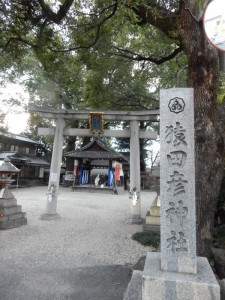
The shrine precincts
The monkeyThere is not much to the shrine, but one striking aspect is a row of five Buddhist sculptures close to the Honden. You’d imagine that such an unusual feature would have attracted attention, but there was no explanation on the accompanying noticeboard as to their provenance nor could the priest’s son offer any suggestion as to why they were there.
Since the statues included the founder of Shugendo, En no Gyoja, I presumed the shrine must have been linked with mountain asceticism in the past. That would accord with its dedication to Sarutahiko, an earthly deity who guided the descending Yamato deities through the mountains. The monkey acted as his messenger.
In fact the monkey is usually associated with Sanno, deity of Mt. Hiei. Interestingly, the priest’s son told me the shrine had close connections with a nearby Hie Shrine. As the centre of the Tendai faith, it would have had ties with Shugendo.
Unfortunately I couldn’t ascertain if the statues had been there since Edo times, or if they were placed there at some point after the Meiji separation of Shinto and Buddhism. Nonetheless my visit led me to think that syncretism is so deeply embedded in Japanese hearts that even priest’s sons don’t think of the two religions as being distinct.
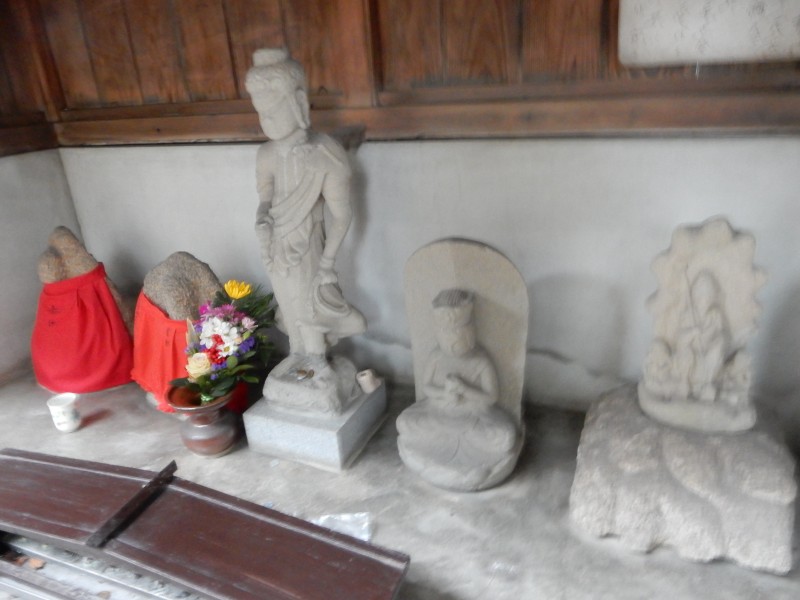
The five small statues close to the Honden: from right to left, En no Gyoja, Kannon, Fudo Myoo, and two Jizo statues.
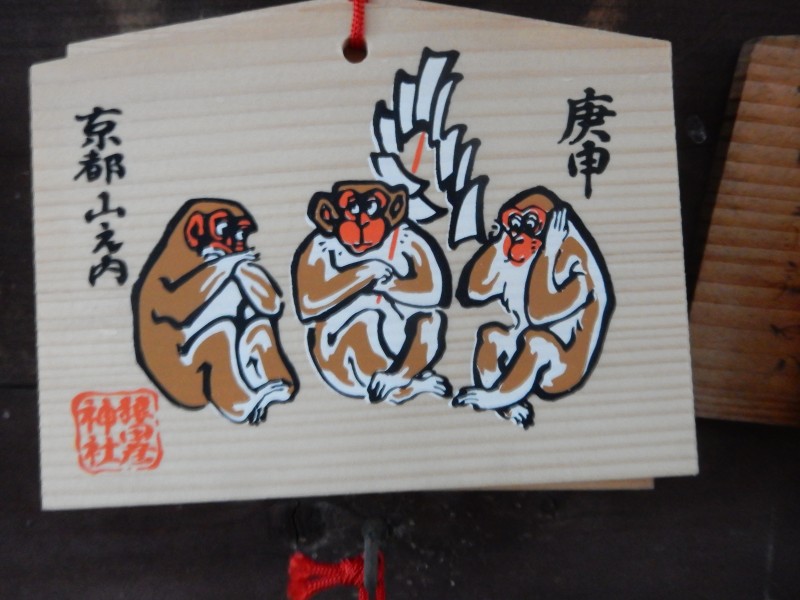
The shrine’s ema shows the three wise monkeys – speak no evil, see no evil, hear no evil. They became famous after being included in the decoration at Tosho-gu shrine in Nikko. In Japanese they are referred to as mizaru, kikazaru, iwazaru.
******************
For all about monkey gods and monkeys in Japanese religion, see here.

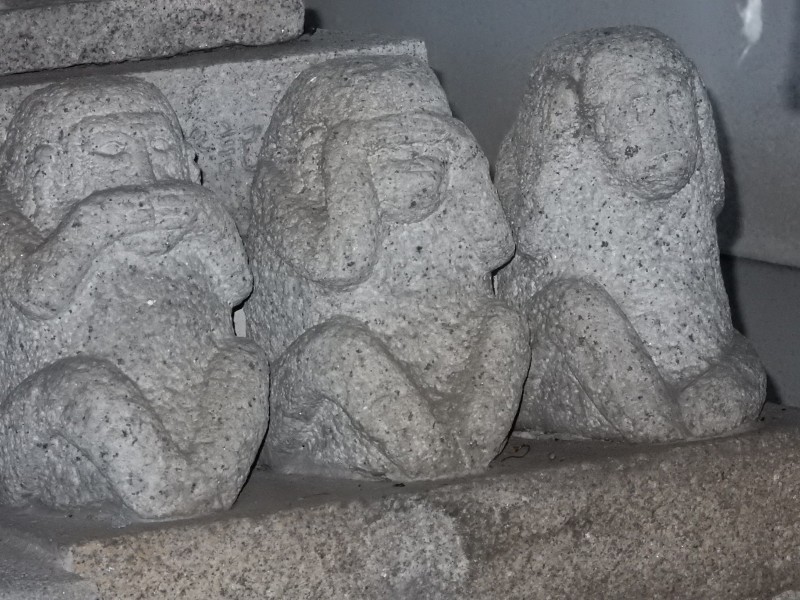
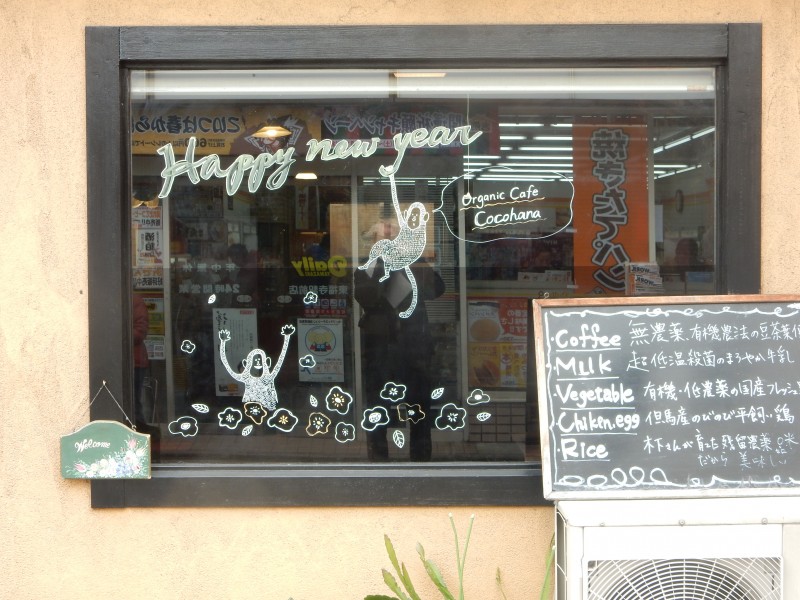
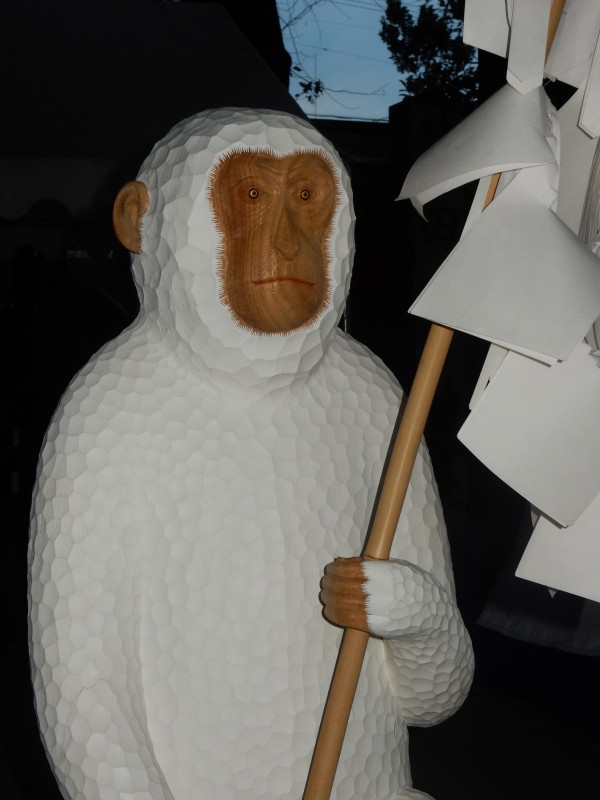
Leave a Reply